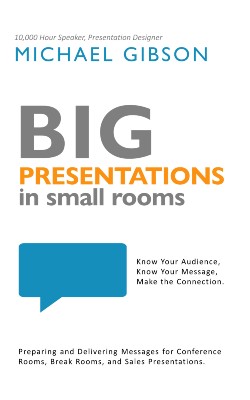Presentation Silence is like a secret weapon. It’s powerful, but many people don’t realize it’s available.
You know your message. You know your audience. You are determined to make a connection. You understand the audience benefit and you are determined to create rapport so that your message will be well received. You craft an effective outline and you have practiced your presentation until you can talk through it without having to stop and review your notes.
You are ready… to talk.
But are you ready to be silent?
There are times when the best thing to say is—nothing.
Here are a few reasons silence can be a great option.
Presentation Silence is Captivating
Imagine you are in a meeting. The person upfront is providing a project update along with some recommendations. It is 4 minutes into a 6-minute presentation.
“The first two items we discussed were the need for increased budget and an adjustment to the timeline, the final item to address is…”
And then silence.
What happens to your attention?
What happens in the audience?
Do they lose focus, or do they regain it?
Sudden changes capture attention. If things are quiet and then suddenly loud, people startle awake and look around.
The opposite is true. When things are loud and suddenly go quiet, people notice the change and increase their awareness.

Presentation Silence Creates Accountability
Imagine another meeting. A supervisor is sharing instructions regarding this week’s work. While talking, she notices two employees having a side conversation.
The supervisor stops talking and looks at them.
What is most likely to happen in this scenario?
“Oops. Sorry, Boss. We are listening.”
And then the presentation can continue.
The supervisor was able to provide accountability without losing much time and without having to use words.
Presentation silence creates accountability.

Presentation Silence Creates Brain Space
Place yourself in yet another presentation.
This time a new and surprising piece of data is being revealed.
This fact changes everything. The audience needs to consider it and then make some careful decisions.
If the presenter creates curiosity about this fact and then reveals it, silence can be a decisive next step. Simply let the new information sink in for a few seconds. The silence may be broken by the audience members as they ask questions and discuss the ramifications.
The silence creates the brain space for the concept to be considered.
If the presenter fails to provide that space, the audience might ignore them because the information has captured their attention.
Providing silence makes you look wise because you realized the need for it—the need for the audience to have brain space.

At other times, the presenter is the one who needs the brain space. Perhaps a challenging question has been asked. Maybe a moment of tension has been created. The presenter needs to slow down and think so that the response will be thoughtful and not reactionary.
And what about those times when a word escapes us?
It is common for presenters to pause while quickly thinking of the next word or the next topic. This is where the verbal pause can become an annoying habit. Because we are uncomfortable with silence, we fill it with “umms” and “uhhs” and meaningless phrases or business buzzwords. Silence is a much better alternative. Be silent.
Silence can create brain space for the presenter and allow that next word to arrive.
Presentation Silence Can Serve Multiple Purposes
And sometimes, the silence fulfills multiple purposes.
I have a stressful memory of a presentation. An observer who had been half-listening approached me afterward to offer critiques. The critiques confirmed the fact that they had not been paying attention. The review was so inappropriate and inaccurate that I struggled to form an appropriate response.
There was a long silence as I looked at the critic and waited for the words to come. The silence created brain space.
The silence then created accountability as the critic’s own words echoed in her mind. She mumbled a half-apology and quickly left. It was then I realized that the silence had been powerful. I was using it to think, but it had the effect of accountability.
That is good to know!

Presentation silence is like a swiss army knife. It has many uses. It can create interest, it can create accountability, and it can create brain space. Keep it in mind when you speak, and you will be well on your way to making big presentations in small rooms!
Want to know more? Keep reading the blog!
Do you prefer to listen? Check out The Big Presentations Podcast!
Want to know even more? Order the book Big Presentations in Small Rooms!
Are you looking for a community of encouragement and guidance? Join The Workplace Presentations Hub and receive a bonus resource, “Quick Tips for Storytelling.”




